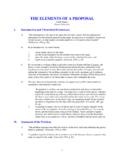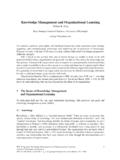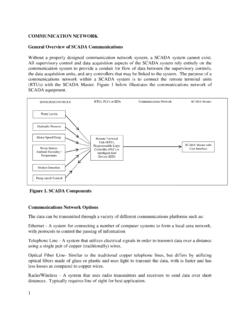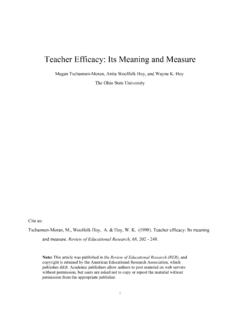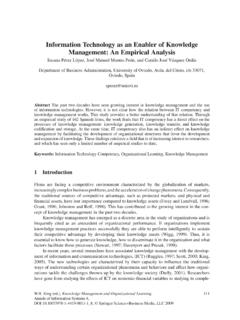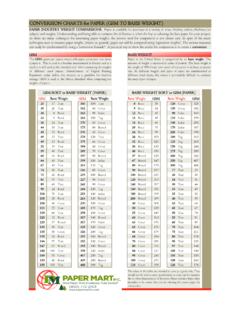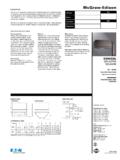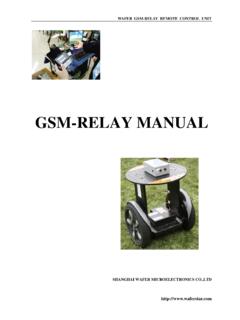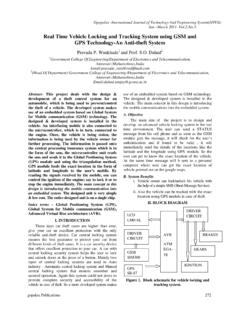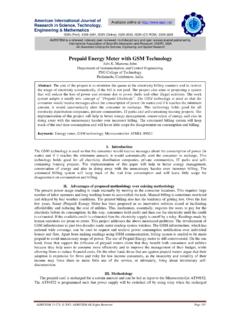Transcription of Global System for Mobile Communication (GSM)
1 Web ProForum The International Engineering Consortium1/19 Global System for MobileCommunication (GSM)DefinitionGlobal System for Mobile Communication (GSM) is a globally accepted standardfor digital cellular Communication . GSM is the name of a standardization groupestablished in 1982 to create a common European Mobile telephone standardthat would formulate specifications for a pan-European Mobile cellular radiosystem operating at 900 MHz. It is estimated that many countries outside ofEurope will join the GSM tutorial provides an introduction to basic GSM concepts, specifications,networks, and services. A short history of network evolution is provided in orderset the context for understanding 1. Introduction: The Evolution of Mobile Telephone Systems 2. GSM 3.
2 The GSM Network 4. GSM Network Areas 5. GSM Specifications 6. GSM Subscriber ServicesSelf-TestCorrect AnswersAcronym GuideWeb ProForum The International Engineering Consortium2/191. Introduction: The Evolution of MobileTelephone SystemsCellular is one of the fastest growing and most demanding telecommunicationsapplications. Today, it represents a continuously increasing percentage of all newtelephone subscriptions around the world. Currently there are more than 45million cellular subscribers worldwide, and nearly 50 percent of thosesubscribers are located in the United States. It is forecasted that cellular systemsusing a digital technology will become the universal method oftelecommunications. By the year 2005, forecasters predict that there will be morethan 100 million cellular subscribers worldwide.
3 It has even been estimated thatsome countries may have more Mobile phones than fixed phones by the year2000 (see Figure 1).Figure 1. Cellular Subscriber Growth WorldwideThe concept of cellular service is the use of low-power transmitters wherefrequencies can be reused within a geographic area. The idea of cell-based mobileradio service was formulated in the United States at Bell Labs in the early , the Nordic countries were the first to introduce cellular services forcommercial use with the introduction of the Nordic Mobile Telephone (NMT) systems began in the United States with the release of the advancedmobile phone service (AMPS) System in 1983. The AMPS standard was adoptedby Asia, Latin America, and Oceanic countries, creating the largest potentialmarket in the world for the early 1980s, most Mobile telephone systems were analog rather thandigital, like today's newer systems.
4 One challenge facing analog systems was theinability to handle the growing capacity needs in a cost-efficient manner. As aresult, digital technology was welcomed. The advantages of digital systems overanalog systems include ease of signaling, lower levels of interference, integrationof transmission and switching, and increased ability to meet capacity 1 charts the worldwide development of Mobile telephone ProForum The International Engineering Consortium3/19 Table 1. The Development of Mobile Telephone SystemsYearMobile System1981 Nordic Mobile Telephone (NMT) 4501983 American Mobile Phone System (AMPS)1985 Total Access Communication System (TACS)1986 Nordic Mobile Telephony (NMT) 9001991 American Digital Cellular (ADC)1991 Global System for Mobile Communication (GSM)1992 Digital Cellular System (DCS) 18001994 Personal Digital Cellular (PDC)1995 PCS 1900 Canada1996 PCS United States2.
5 GSMT hroughout the evolution of cellular telecommunications, various systems havebeen developed without the benefit of standardized specifications. This presentedmany problems directly related to compatibility, especially with the developmentof digital radio technology. The GSM standard is intended to address 1982 to 1985 discussions were held to decide between building an analog ordigital System . After multiple field tests, a digital System was adopted for next task was to decide between a narrow or broadband solution. In May1987, the narrowband time division multiple access (TDMA) solution was summary of GSM milestones is given in Table 2. GSM MilestonesYearMilestone1982 GSM formed1986field test1987 TDMA chosen as access method1988memorandum of understanding signedWeb ProForum The International Engineering Consortium4/191989validation of GSM system1990preoperation system1991commercial System start-up1992coverage of larger cities/airports1993coverage of main roads1995coverage of rural areas3.
6 The GSM NetworkGSM provides recommendations, not requirements. The GSM specificationsdefine the functions and interface requirements in detail but do not address thehardware. The reason for this is to limit the designers as little as possible but stillto make it possible for the operators to buy equipment from different GSM network is divided into three major systems: the switching System (SS),the base station System (BSS), and the operation and support System (OSS). Thebasic GSM network elements are shown in Figure 2. GSM Network ElementsWeb ProForum The International Engineering Consortium5/19 The Switching SystemThe switching System (SS) is responsible for performing call processing andsubscriber-related functions. The switching System includes the followingfunctional units: home location register (HLR) The HLR is a database used forstorage and management of subscriptions.
7 The HLR is considered themost important database, as it stores permanent data aboutsubscribers, including a subscriber's service profile, locationinformation, and activity status. When an individual buys asubscription from one of the PCS operators, he or she is registered inthe HLR of that operator. Mobile services switching center (MSC) The MSC performs thetelephony switching functions of the System . It controls calls to andfrom other telephone and data systems. It also performs such functionsas toll ticketing, network interfacing, common channel signaling, andothers. visitor location register (VLR) The VLR is a database thatcontains temporary information about subscribers that is needed bythe MSC in order to service visiting subscribers. The VLR is alwaysintegrated with the MSC.
8 When a Mobile station roams into a new MSCarea, the VLR connected to that MSC will request data about themobile station from the HLR. Later, if the Mobile station makes a call,the VLR will have the information needed for call setup without havingto interrogate the HLR each time. authentication center (AUC) A unit called the AUC providesauthentication and encryption parameters that verify the user's identityand ensure the confidentiality of each call. The AUC protects networkoperators from different types of fraud found in today's cellular world. equipment identity register (EIR) The EIR is a database thatcontains information about the identity of Mobile equipment thatprevents calls from stolen, unauthorized, or defective Mobile AUC and EIR are implemented as stand-alone nodes or as acombined AUC/EIR Base Station System (BSS)All radio-related functions are performed in the BSS, which consists of basestation controllers (BSCs) and the base transceiver stations (BTSs).
9 Web ProForum The International Engineering Consortium6/19 BSC The BSC provides all the control functions and physical linksbetween the MSC and BTS. It is a high-capacity switch that providesfunctions such as handover, cell configuration data, and control ofradio frequency (RF) power levels in base transceiver stations. Anumber of BSCs are served by an MSC. BTS The BTS handles the radio interface to the Mobile station. TheBTS is the radio equipment (transceivers and antennas) needed toservice each cell in the network. A group of BTSs are controlled by Operation and Support SystemThe operations and maintenance center (OMC) is connected to all equipment inthe switching System and to the BSC. The implementation of OMC is called theoperation and support System (OSS).
10 The OSS is the functional entity from whichthe network operator monitors and controls the System . The purpose of OSS is tooffer the customer cost-effective support for centralized, regional, and localoperational and maintenance activities that are required for a GSM network. Animportant function of OSS is to provide a network overview and support themaintenance activities of different operation and maintenance Functional ElementsOther functional elements shown in Figure 2 are as follows: message center (MXE) The MXE is a node that providesintegrated voice, fax, and data messaging. Specifically, the MXEhandles short message service, cell broadcast, voice mail, fax mail, e-mail, and notification. Mobile service node (MSN) The MSN is the node that handles themobile intelligent network (IN) services.

